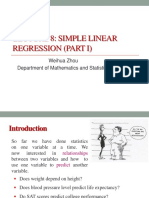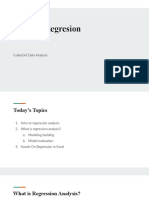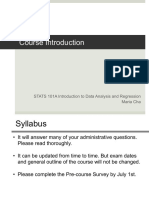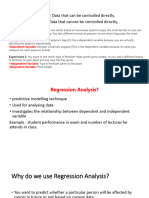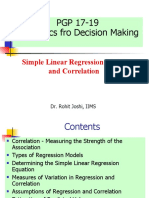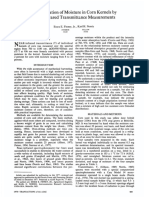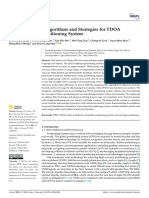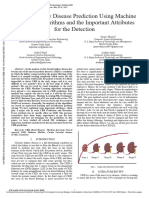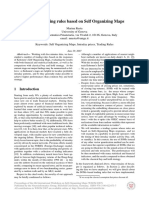0% found this document useful (0 votes)
105 views75 pagesLecture 4 Linear Regression
This document provides an overview of linear regression models. It describes linear regression as representing the relationship between a dependent variable and one or more independent variables with a linear equation. The key steps of regression modeling are outlined as 1) hypothesizing the deterministic relationship, 2) specifying the probability distribution of the error term, 3) evaluating the fitted model, and 4) using the model for prediction and estimation. Ordinary least squares is explained as a method for estimating regression coefficients by minimizing the sum of squared differences between observed and predicted values of the dependent variable.
Uploaded by
Gaurav GargCopyright
© © All Rights Reserved
We take content rights seriously. If you suspect this is your content, claim it here.
Available Formats
Download as PDF, TXT or read online on Scribd
0% found this document useful (0 votes)
105 views75 pagesLecture 4 Linear Regression
This document provides an overview of linear regression models. It describes linear regression as representing the relationship between a dependent variable and one or more independent variables with a linear equation. The key steps of regression modeling are outlined as 1) hypothesizing the deterministic relationship, 2) specifying the probability distribution of the error term, 3) evaluating the fitted model, and 4) using the model for prediction and estimation. Ordinary least squares is explained as a method for estimating regression coefficients by minimizing the sum of squared differences between observed and predicted values of the dependent variable.
Uploaded by
Gaurav GargCopyright
© © All Rights Reserved
We take content rights seriously. If you suspect this is your content, claim it here.
Available Formats
Download as PDF, TXT or read online on Scribd
/ 75








